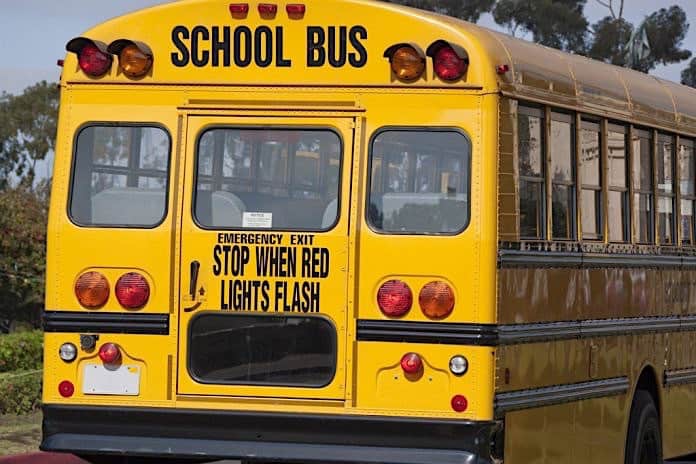Few people, if any, deliberately run a red light or stop sign at an intersection. So why do illegal school bus passing incidents continue to be such a problem?
Cognitive expert Shmuel Bolen pointed out for NASDPTS members and conference attendees what the industry already knows so well, namely that tens of millions of illegal passes occur nationwide each year. So it’s a miracle there are only about 10 fatalities annually.
But how might information design on school buses, specifically lettering on the rear of the vehicles, help change this behavior? Bolen returned to the NASDPTS Conference to again ask a question he first posed several years ago to members, and before that, at the STN EXPO. The information he provided is derived from informal studies he has performed in his home state of Massachusetts after noticing the potential confusion on his daughter’s school bus.
Several NASDPTS members commented that many motorists simply are distracted and it will forever be a challenge to effect such behavior. Bolen indicated that the problem may have more to do with how the human eye processes information.
“We all have thousands of mental models for accomplishing certain tasks,” said Bolen, a user experience research designer for ACI Worldwide and blogger. “These are internal representations of how to complete a task quickly and accurately. They allow people all over the world who don’t know each other to interact with each other every day.”
For example, Bolen talked about how a Dutch bicycle manufacturer reduced damaged shipments by 70 percent by placing the picture of a flat screen TV on the side of packaging. The result was more care shown during deliveries.
Bolen said the same principle applies to motorists navigating traffic. They read the message they see, such as the words “School Bus” and “Do Not Pass When Red Lights Flash,” they attempt to process what the message means, and then they take a specific action (or inaction) as a result of the information.
“You need to get first one right to understand what to do and therefore to make sure the action is correct,” he said.
Complicating this, he added, are the various messages displayed on the rear school buses that can range from state to state. He said many phrases are printed in all caps, which is an uncommon format in most people’s everyday lives. And to fit long phrases on the bus, for example the rear emergency door, the fonts are often stretched, which Bolen said makes the eyes work harder.
Multiple messages, such as “Bus Stops at all Railroad Crossings,” “Emergency door” and “Stay Back 100 feet,” complicate the ability of motorists to decipher what they should or should not do.
“The hypothesis is, then, that drivers have already made up their mind to go and his attention is already down the road,” he said. “Thus, they won’t even see the stop arm deploy or the flashing lights.”
While more studies are necessary, Bolen has advocated for a rethinking of font sizes and faces used, limiting the messaging to the most vital direction for motorists and placing those words in a more linear way that is easier to read.
















